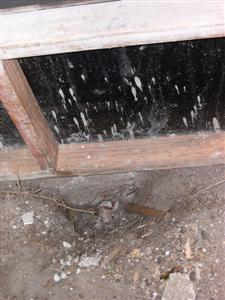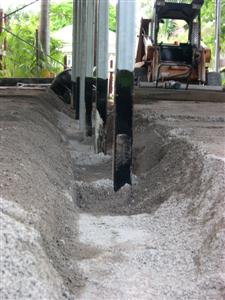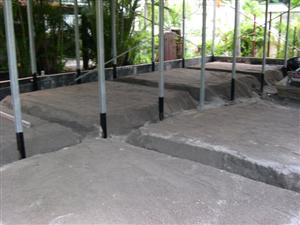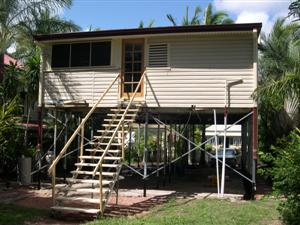Gregory over at The Joy of Home Ownership posed a few very good questions to me about why out house was constructed the way that it is. I’ll go through some of his questions to see if I can answer them well enough.
1. Why is your house built on stilts?
From what I can tell there are a few reasons for this:
- It keeps the house cooler
– By allowing the breeze to blow under the house it is supposed to help cool the house down. In the older houses that have not had the floors covered up or replaced you can usually even find gaps in the floorboards that are supposed to help even more with the cooling. - Keeps us away from the critters
When the Europeans first started coming to this area they wanted to stay as far away from the snakes, crocs, spiders and other insects as they could, so they went up - Flooding
Being in the tropics there is always the threat of a lot of rain and flooding. By being up higher it helps keep us away from the water. - Emulates the style in the Pacific Islands
I read this somewhere, but of course now I can’t find it. Apparently Captain Cook was quite impressed with how well the huts in the Pacific Island withstood the weather and provided a good home so the style was somewhat emulate in Northern Australia. This also explains the unique shapes of some of our roofs.
2. What is the space under the house used for?
- Most people seem to use the space for car parking, storage and a workshop. I did that at our other place and did it here for the first few months.
- Raising and restumping the houses so that the area under can be enclosed and built in is become more common in the old Queenslanders. This is the route that we have gone with this place. This house is high enough above the flood zone that it should never really be an issue and it is a fairly easy, but not cheap as we are discovering, way to double our floor space.
3. Are there basements or crawlspaces?
- The closest thing that I have seen to this in Australia is wine cellars, but other than that almost all construction is above ground.
- A unique difference to this is Coober Pedy, where a lot of the homes, businesses and even a church are built in old mine shafts.
4. What about using block-work for construction?
A lot of the new homes are build using cinder-block or besa brick construction. Then the weight of the house can sit on the block work instead of stumps. Our house before we lifted had a combination of stumps and block-work for the walls under the house.
We considered using block-work again but decided to use stumps because it is difficult to insulate besa brick and they would have had to build an internal timber frame anyways. The width of the walls would be 10 – 20cm less if we used timber instead of block work and also the exterior finish would flow better from top to bottom.
I found one of my older posts entitled “Why is my house only 5 feet above the Ground?“, which explains one builders explanation of why a lot of the houses are a rather awkward 5 feet above the ground.
If there are any other questions out there please let me know and I will do my best to answer them…






